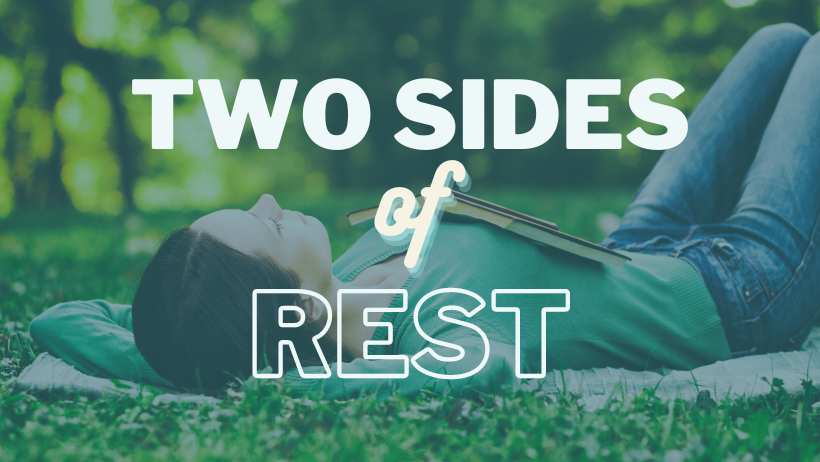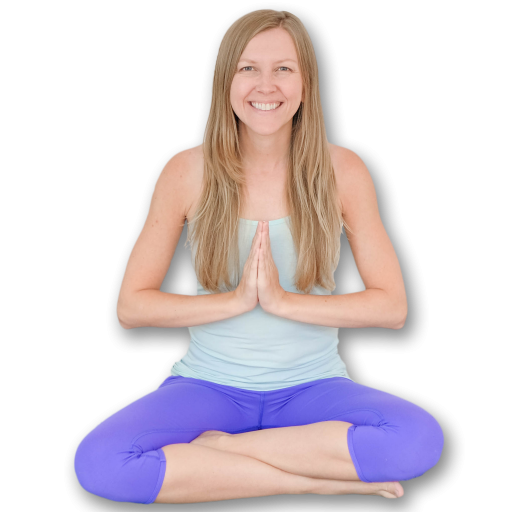As a yoga and fitness instructor, I feel my biggest and most important job is to motivate. I want to inspire others to move their bodies, build strength and stability, and get their hearts pumping! Ultimately, what I’m really trying to do is to help people care for their bodies and feel their best. However, it’s important to realize that taking time to rest is also a part of the equation.
We need to show ourselves self-compassion and recognize that we aren’t going to operate at 100% every single day. Not only is that not possible, we shouldn’t even try!

Rest is crucial, and there are two sides: physical and mental. It’s valuable to have insights into both.
Physical Rest
Rest is not just a luxury; it’s a necessity. When we engage in physical activities like yoga, strength training, or cardio workouts, we put stress on our muscles, joints, and cardiovascular system. While this is essential for growth and improvement, it’s during rest and recovery that our bodies actually adapt and become stronger. During rest, your muscles repair and grow, your cardiovascular system recovers, and your mind recharges.
Mental Rest
Physical recovery is not the only reason we need to rest. Our minds need a break too! However, this can often be the hardest form of rest to achieve. Even during what might seem like a peaceful moment, such as sipping on your morning coffee, your mind can start whirling away with to-do lists and other sources of stress.
How To Combat an Overactive Mind
When I need to calm my overactive mind, there are two tactics I use. First, I try to focus on my surroundings to stay in the present moment. Whether it’s the beauty of nature or the coziness of a room, I take in everything around me. If I need a little extra help, I draw my attention to my breathing, mentally repeating “inhale” and “exhale” with each breath. If my surroundings aren’t particularly holding my interest, I simply close my eyes and concentrate on my breathing.
My second strategy involves engaging in a “mindless” task. It’s something I genuinely enjoy, doesn’t demand intense thinking, yet holds my attention. This diversion effectively shifts my focus away from stress-inducing thoughts and towards something that brings me joy. The task you choose can vary based on your interests; for me, it’s often knitting, colouring, reading, or puzzles.
Balancing Act: How to Incorporate Rest into Your Routine
Understanding the importance of rest is one thing. Now the question becomes, how do we strike the right balance? Here are some tips on how to incorporate rest effectively:
- Listen to Your Body: Pay close attention to your body’s signals. If you’re feeling fatigued, sore, or mentally drained, it’s a sign that you need rest.
- Schedule Rest Days: Plan regular rest days into your fitness routine. These days are an opportunity to relax, engage in light, low-impact activities, and give your body a break.
- Quality Sleep: Prioritize sleep. Aim for 7-9 hours of quality rest each night. A good night’s sleep can work wonders for your overall health and fitness.
- Mindful Movement: Incorporate gentle forms of movement like restorative yoga or stretching on your rest days. These activities can enhance flexibility and provide relaxation.
- Meditation and Breathing: Dedicate time to meditation and deep breathing exercises to calm your mind and reduce stress.
Remember that you can’t be at 100% every day, and that’s okay. So, take a moment to pause, breathe, and allow yourself not just the rest you deserve but the rest you truly need.


